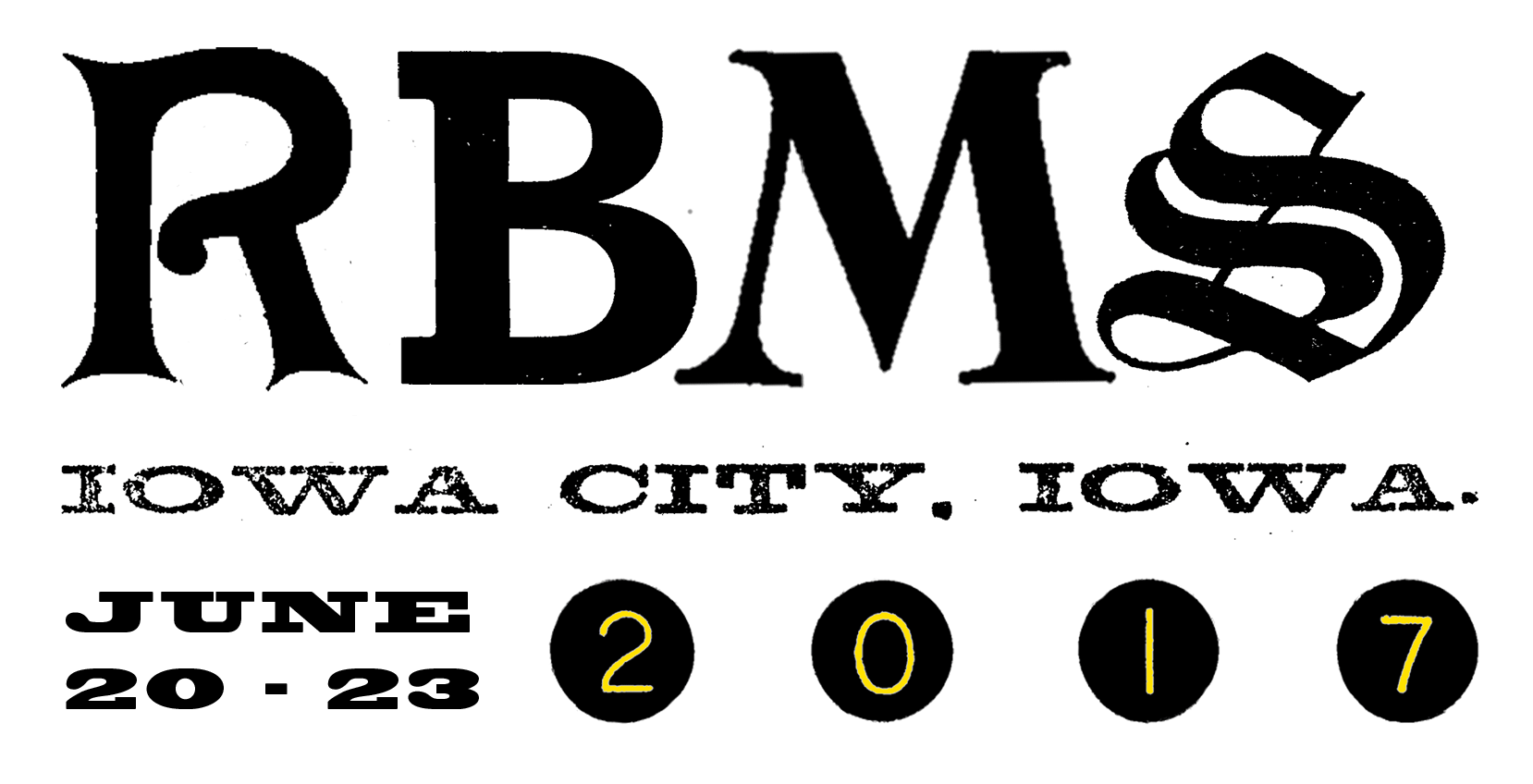Panel: The Narrative of Exhibits and Exhibition Practices: Approaches to design and execution*
Sponsored by Franklin Gilliam :: Rare Books.
A Survey of Exhibition Practices in North American Rare Book Libraries, Special Collections and Archives
Rare book libraries, special collections and archives use exhibitions as a way to tell their stories, including stories of their institutions, their collections, their donors, and their communities. Is there a shared narrative among institutions? Are we all following similar approaches? Are there particularly innovative approaches in place? What are the differences and similarities with museums? This paper will discuss the results of a pilot study based on a survey of exhibition practices in North American rare book libraries, special collections and archives. The survey covers a representative sample of institutions, both academic and non-academic, including, among others, the Harry Ransom Center at the University of Texas at Austin, the Thomas Fisher Rare Book Library at the University of Toronto, and the Grolier Club in New York. The main purpose of this study is to: assess how exhibition programs are run; identify what their main goals are; identify who the audience is; identify current trends and new emerging approaches; identify successes and challenges; assess differences and similarities with museums. Areas covered include: exhibition topics and themes, staffing, funding, accessibility issues, design approaches, metrics and how impact is measured, best practices, collaboration and interaction with museums, etc. The results of this study provide insight into exhibition practices in rare book libraries, special collections and archives, and are useful to both established professionals and institutions that are just starting this kind of programs.
Speaker: Francesca Marini, PhD – Associate Professor, Associate Dean for Special Collections and Director of the Cushing Memorial Library and Archives at Texas A&M University (College Station, Texas)
Telling the Story of Our Collections through Space and Permanent Exhibits
The University of Kansas’ Spencer Research Library boasts the iconic North Gallery, a sweeping space with views into the library’s closed stacks that has hosted events ranging from class tours and lectures to music performances and marriage proposals, and has remained unchanged since the building opened in 1968. Over the past few years, a team from across the libraries has set out to redesign the space to incorporate permanent exhibits and multimedia installations that enable us to tell the story of our campus, our library, our donors, and our collections to visitors both scholarly and casual. Honoring the architectural and emotional integrity of the space while also representing all of the library’s four major collecting areas has been an important goal. For decades, the space showcased only a portion of our rare books, both a legacy of segregated physical spaces and a manifestation of divisions within the library that we have since worked hard to eliminate. The reprogrammed space, which now reflects the wide diversity of our materials (in both topic and format) affords visitors of all ages and abilities a rich and deep look into our collections via a self-guided tour. The hard work of crafting and shaping a narrative from thousands of volumes, millions of photographs, and dozens of collection strengths has also led to a deepening of our staff’s knowledge of our collections and our capacity to tell new and different stories in our work with students and researchers.
Speaker: Beth M. Whittaker – Assistant Dean of Distinctive Collections, Director of Spencer Research Library. University of Kansas.
Through Their Eyes: How Visitors View Exhibitions
This paper will report on the results of a study of user engagement with special collections exhibitions. Wearable eye tracking technology was used to record how participants moved through two exhibition spaces and to track exactly what objects they looked at, and for how long. Wearable eye trackers are lightweight glasses with a built-in video camera and infrared sensors that detect pupils and track eye movements across the visual field as captured by the camera. A total of 23 participants viewed one of two Harvard Library exhibitions: Shakespeare: His Collected Works at Houghton Library or Opening New Worlds: The Colonial North American Project at the Harvard University Archives. Each participant spent approximately six minutes viewing the exhibition while wearing the eye tracking glasses, and then completed a short questionnaire. Participants were asked to rate on a five-point scale their interest in the topic, familiarity with the topic, knowledge of the topic, how much they enjoyed the exhibition, and if they would view future exhibitions at Harvard Library. Overall ratings for Shakespeare exhibition were slightly higher than Colonial North America. This paper will discuss participant’s trajectories through the two exhibits and how the physical layout of the space interacted with these trajectories. In addition, I will discuss how much attention participants paid to exhibition labels, with an emphasis on how much time was spent reading versus skimming.
Speaker: Kris M. Markman – Director of Digital Learning & User Experience (DLUX) for the Harvard Library.
*This session will be recorded.
